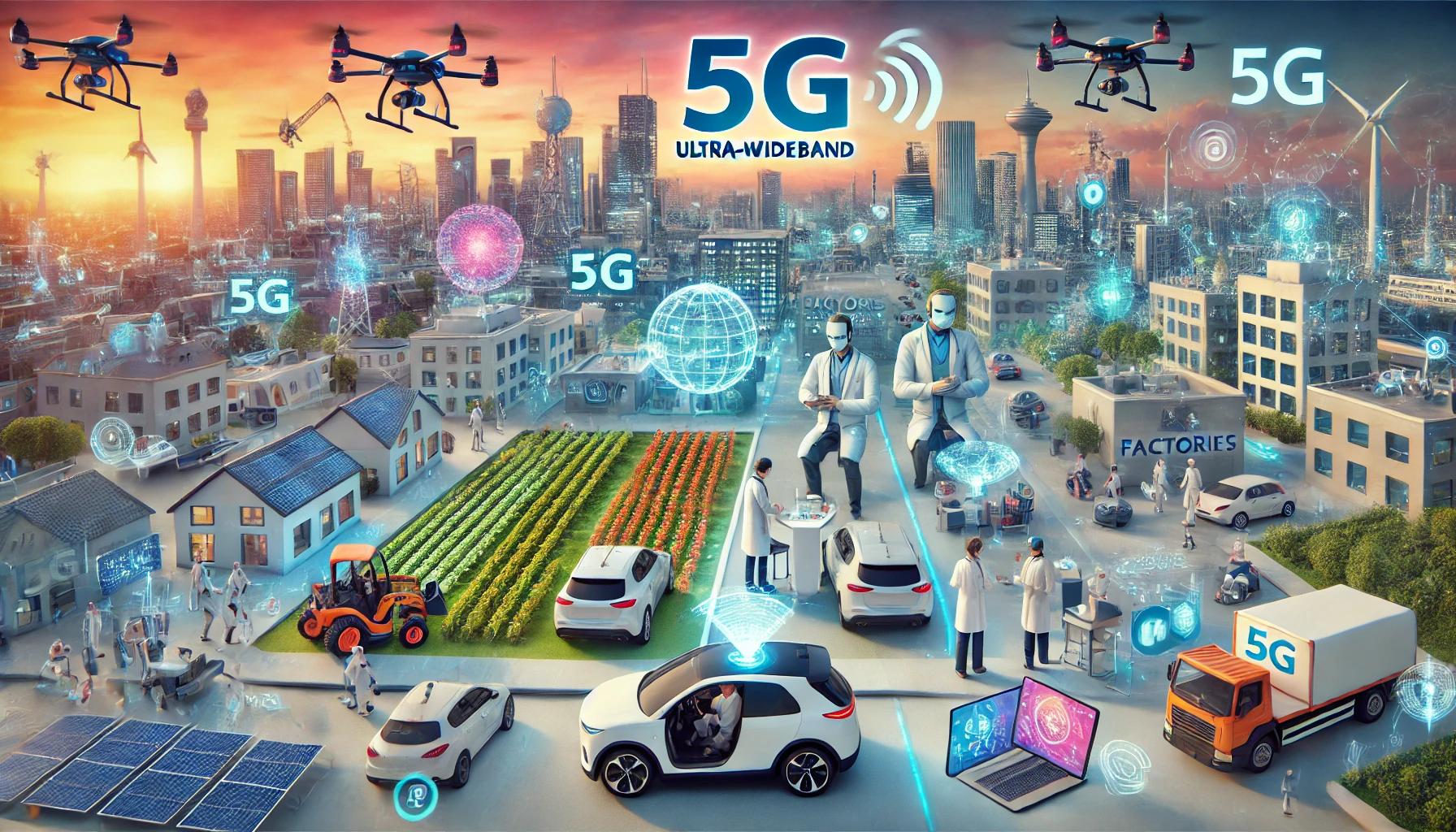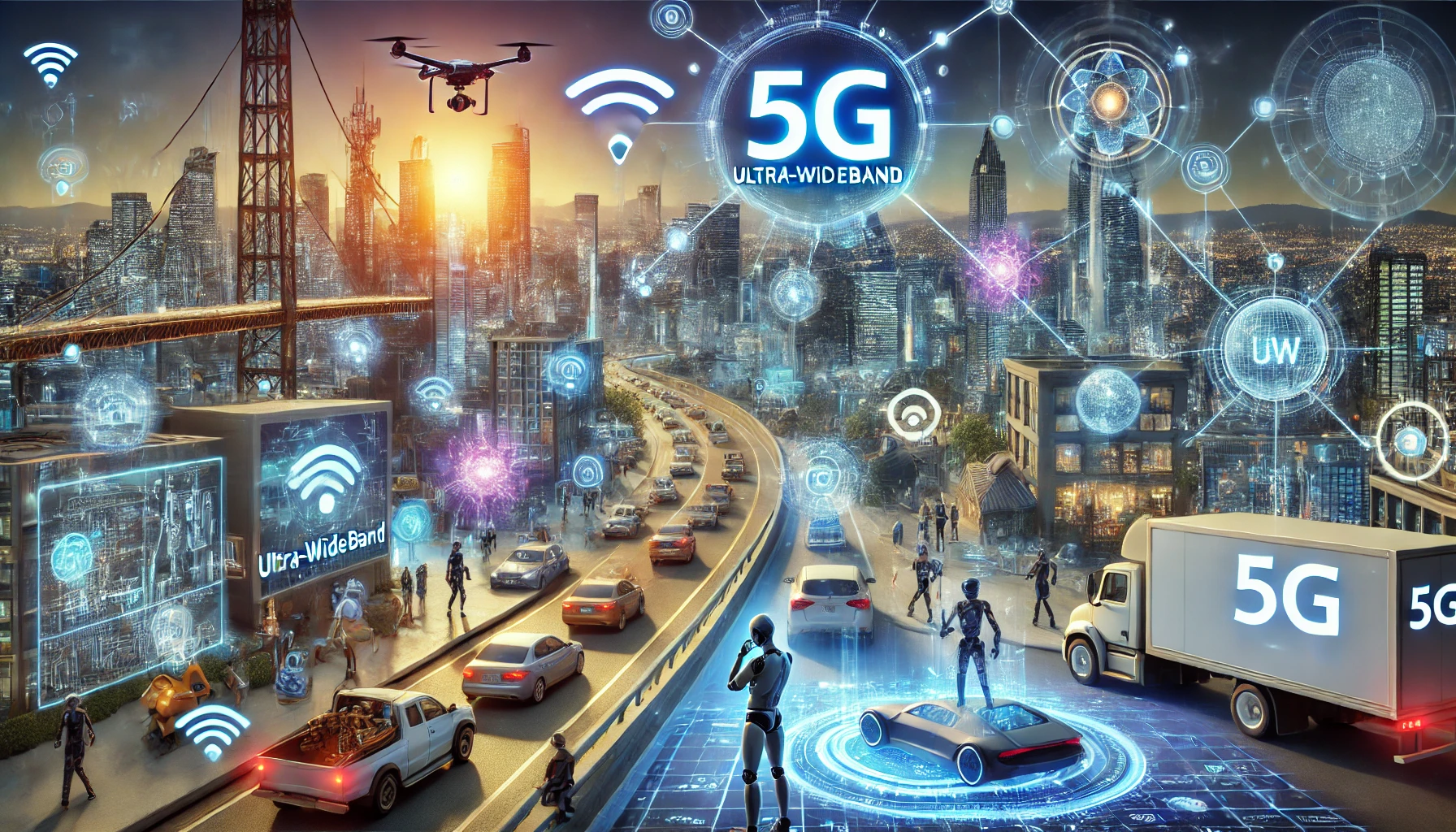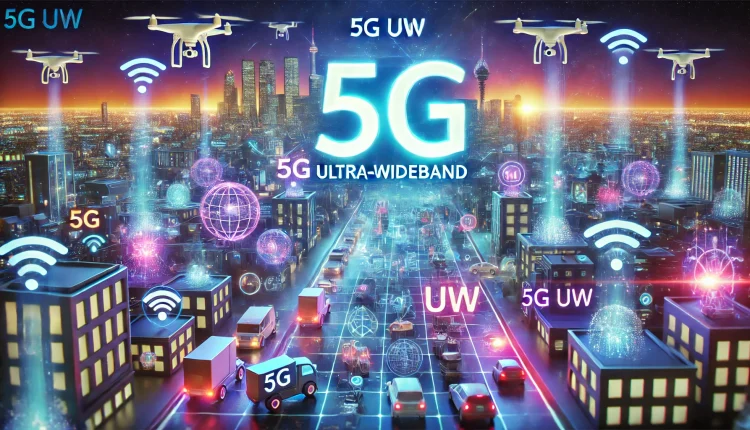Introduction: The Rise of 5G UW
The evolution of mobile networks is accelerating at a rapid pace, and one of the most transformative advancements is the arrival of 5G. However, not all 5G UW is created equal. Among the many variations of 5G, one of the most exciting is 5G Ultra-Wideband. 5G UW represents a next-level connection, offering ultra-fast speeds, low latency, and massive network capacity. But what exactly is 5G UW, how does it differ from other 5G technologies, and how will it impact our lives?
In this article, we’ll take an in-depth look at 5G UW, what makes it unique, its benefits, and how it’s shaping the future of connectivity.
What is 5G UW?
5G UW (Ultra-Wideband) is a specific implementation of 5G technology that operates on high-frequency millimeter waves. These millimeter waves are significantly faster than lower frequencies typically used for wireless communication. 5G UW provides ultra-high-speed internet connections, lower latency, and can support more devices with less interference.
There are three main types of 5G technology:
- Low-band 5G: Offers broader coverage but slower speeds.
- Mid-band 5G: Offers a good balance of coverage and speed.
- High-band 5G (5G UW): Offers extremely fast speeds but with more limited coverage areas.
5G UW is typically deployed using the mm Wave spectrum, which is capable of providing ultra-fast download and upload speeds—up to 10 times faster than 4G LTE. However, due to its reliance on high-frequency millimeter waves, 5G UW has a more limited range, meaning it works best in densely populated areas like cities or urban hotspots.
How Does 5G UW Work?
5G UW operates at higher frequencies compared to traditional 5G technologies, enabling it to support faster data transfer and more efficient communication. These high-frequency millimeter waves are capable of carrying large amounts of data quickly, allowing for extremely low latency and faster download speeds.
However, high-frequency signals are more prone to interference and can be blocked by obstacles like buildings or even heavy rain. This is why 5G UW is deployed in smaller, localized areas using a dense network of small cell towers. These small cells are placed closer together, providing better coverage in areas where traditional cell towers might not reach.
Benefits of 5G UW
Incredible Speed
One of the most notable benefits of 5G UW is its potential for super-fast download and upload speeds. 5G UW can reach speeds of up to 10 Gbps, enabling consumers to download entire movies or large files in seconds.
Low Latency
With 5G UW, latency (the delay before a transfer of data begins) is drastically reduced. This means applications that require real-time data exchange, such as online gaming, autonomous vehicles, and remote surgeries, will experience minimal lag.
Higher Capacity
5G UW can support a massive number of devices simultaneously. With the increasing use of IoT (Internet of Things) devices, smart cities, and connected devices, 5G UW’s ability to handle more connections at once will become crucial.
Improved User Experience
As 5G UW networks expand, users will enjoy a more consistent and reliable experience. Whether they are streaming 4K video, engaging in virtual reality experiences, or making high-quality video calls.
Innovation in Industries
Beyond consumers, industries such as healthcare, transportation, manufacturing, and entertainment are poised to benefit from 5G UW’s capabilities. For instance, 5G UW can enable remote surgeries, autonomous driving, real-time factory monitoring, and immersive VR/AR experiences.
5G UW vs. 5G Sub-6 GHz
While 5G UW and 5G Sub-6 GHz (low- and mid-band 5G) both fall under the umbrella of 5G technology, they differ significantly in terms of performance.
- 5G Sub-6 GHz: Offers a wider coverage area, better for rural or suburban areas. However, it provides slower speeds compared to 5G UW and higher latency.
- 5G UW (High-Band): Focused on urban and densely populated areas, 5G UW offers ultra-fast speeds but with limited coverage due to signal degradation over long distances or through obstacles.
The choice between these two types of 5G depends largely on the geographical region and the intended use case. 5G UW is perfect for areas where speed and low latency are paramount, while 5G Sub-6 GHz is ideal for providing coverage in broader areas.
Real-World Applications of 5G UW

Smart Cities
With 5G UW’s high-speed connectivity, smart cities can function more efficiently. This includes traffic monitoring, public safety, energy management, and waste management, all of which can be optimized through real-time data sharing.
Healthcare
The medical field will greatly benefit from 5G UW, particularly in areas like telemedicine and remote surgery. Surgeons can perform complex procedures from remote locations, with minimal delay or data lag, improving patient outcomes.
Entertainment and Medi
5G UW is expected to revolutionize streaming services, offering higher resolution content, faster buffering times, and more immersive virtual reality and augmented reality experiences.
Autonomous Vehicles
Autonomous cars require ultra-low latency and high-speed data to function correctly. 5G UW will provide the infrastructure needed to support the quick communication between vehicles, infrastructure, and cloud computing systems.
Manufacturing and Industry 4.0
5G UW enables the real-time monitoring of machines and equipment, which can predict maintenance needs, optimize production schedules, and reduce downtime.
Challenges of 5G UW
Despite its advantages, 5G UW faces several challenges:
Limited Coverage
The high-frequency millimeter waves used by 5G UW struggle to travel long distances, limiting coverage to more urban and densely populated areas. The signal can be blocked by buildings, trees, and even bad weather.
Infrastructure Requirements
To maintain the benefits of 5G UW, new infrastructure such as small cell towers needs to be installed in dense locations, which can be costly and time-consuming.
Device Compatibility
To fully leverage 5G UW, consumers need devices that are compatible with millimeter wave technology. As 5G adoption grows, more devices will be released with support for 5G UW.
The Future of 5G UW

The future of 5G UW looks incredibly promising. As more cities and countries begin to roll out 5G UW networks, the speed and connectivity offered by these networks will drive new technological innovations. The widespread adoption of 5G UW will also pave the way for the next generation of smart homes, autonomous transportation, and immersive media experiences.
In addition, research is ongoing to expand 5G UW coverage and improve its performance, making it more accessible for users around the globe. As infrastructure and device compatibility improve, 5G UW will become a cornerstone of future digital ecosystems.
Conclusion
5G UW represents the cutting edge of mobile network technology. Its ultra-fast speeds, low latency, and massive capacity will transform industries, improve everyday experiences, and lead to the rise of next-generation applications. While challenges remain, the future of 5G UW is exciting, and it will undoubtedly shape the future of connectivity for years to come.
FAQs
What is 5G UW?
5G UW (Ultra-Wideband) is a type of 5G technology that operates on high-frequency millimeter waves, providing ultra-fast speeds and low latency, primarily used in urban and high-density areas.
How fast is 5G UW compared to 4G?
5G UW can reach speeds up to 10 Gbps, which is up to 10 times faster than 4G LTE, enabling faster downloads, uploads, and real-time communication.
What are the benefits of 5G UW?
The main benefits of 5G UW include incredible speed, ultra-low latency, high device capacity. And the ability to support innovative applications like smart cities, remote healthcare, and autonomous vehicles.
Is 5G UW available everywhere?
No, 5G UW is primarily deployed in urban areas and dense hotspots. Due to its limited range and signal-blocking characteristics, it’s not yet widely available in rural or suburban areas.
How does 5G UW differ from 5G Sub-6 GHz?
5G UW operates on higher frequencies, offering faster speeds but limited coverage. In contrast, 5G Sub-6 GHz offers broader coverage with slower speeds and higher latency.



Comments are closed, but trackbacks and pingbacks are open.